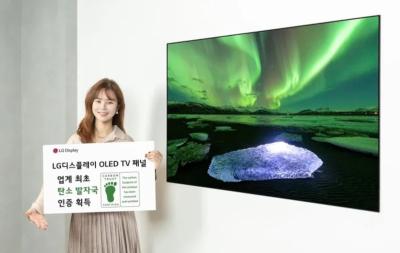OLED Smartphones - introduction and industry news - Page 8
New laser repair system developed to fix AMOLED smartphone screen defects
An interesting video review shows a new repair system, based on lasers, that can fix defects in smartphone AMOLED displays. The system uses optical microscopy to find defects in operating OLED displays, and then a laser is used to fix the problems:
Such systems can be useful, but of course won't be able to fix all problems and defects in AMOLED displays, only ones that were caused by physical problems in conductive lines in the OLED module, that can be fixed by lasers. It will be interesting to see if these machines will truly find a place in the OLED repair aftermarket scene.
The Honor Magic V2 smartphone is highly popular in China, according to JD.com
Honor started selling it Magic V2 foldable smartphone 10 days ago, and according to online retailer JD.com, the phone was the 2nd most popular premium smartphones during the week (Apples iPhone 14 Pro is the most popular phone).
The Magic V2 model sold at JD.com costs 9,999 Yuan (around $1,400 USD). It seems as this is the first foldable that reaches high popularity in China, said to be mostly because of its thin profile and low weight (compared to other foldables). The phone is also sold at other Chinese outlets and can be ordered internationally through Aliexpress.
Tianma, BOE and Visionox report their latest financial results as profits decline, but demand for OLED panels increases
Three display makers in China (BOE, Tianma and Visionox) reported their preliminary financial results for the first half of 2023. It seems as if all companies are facing a sluggish economy and lower demand for displays - but the OLED business is actually seeing increased demand.
We'll start with BOE, that expects an operating profit of around 700-800 million Yuan ($97-110 million USD) in the first half of 2023, a decrease of around 90% from last year. BOE says that it is starting to see demand increasing as the year progresses.
Samsung Electronics stops its BOE OLED review process as the tension between the two companies rises
According to reports from Korea, Samsung Electronics considered adopting AMOLED display produced by BOE for its next flagship smartphone, but the company has halted the review process as the two companies are in the midst of an IP dispute.
A few months ago Samsung filed a motion with the US ITC to halt the import of aftermarket AMOLED displays produced by BOE. A group of OLED makers in China, which includes BOE, answered with a motion of their own, to dismiss an SDC AMOLED patent. This legal battle continues, and the tension between Samsung and BOE is on the rise.
UBI: the foldable OLED market will grow to 61 million units by 2027
UBI Research estimates that the foldable OLED market will reach 22 million units in 2023, and will grow to 61 million units by 2027, a CAGR of 29%.
UBI also published a forecast on cover material market for foldable OLEDs - this market will also expand, and will grow to $840 million n 2027. UBI says that the market share of ultra-thin glass will grow, as Samsung will only produce foldable OLEDs with UTG in the future, and other makers including BOE, CSoT and Visionox are developing UTG panels.
DSCC: OLED panel revenues to decline in 2023, in a second consecutive year
DSCC says that OLED panel revenues will decline 7% in 2023 (to $38.9 billion), the second consecutive year that the OLED market is seeing a decline in sales. The largest declines will be in the OLED TVs and laptops segments.
The OLED smartphone market will actually grow 4% in unit sales, but revenues will decline 5%. The OLED TV market will decline 29% in 2023 in both revenues and units. OLED laptop unit sales will decline by 15%. All other segments, including AR/VR, automotive and tablets, will grow in sales and revenues in 2023.
LG reports its results for Q1 2023: decreased sales as demand is sluggish, delays P10 fab in Paju
LG Display reported its financial results for Q1 2023, with revenues of 4,411 billion Won ($3.3 billion USD), down 40% from the previous quarter and 32% from 2022.
The company says there is 'sluggish demand' for TV and IT products. The company plans to focus on automotive displays, smartphone OLEDs and IT OLEDs (mid-sized panels). LG also aims to increase its sales of OLED gaming monitor panels and transparent OLED displays.
DSCC: BOE's market share in flexible smartphone OLED displays rose to 27%
DSCC says that BOE's market share in the flexible (and foldable) smartphone OLED market has risen to 27% in Q1 2023. BOE flexible and foldable OLED panel sales grew 81% in Q1 2023 compared to last year, as the company enjoys growing sales to Apple, Huawei, Oppo, Realme, Vivo and ZTE. BOE is mostly taking market share from Samsung and LG, while Tianma's market share is also on the rise.
DSCC estimates that flagship smartphone shipments grew 17% in the first quarter, with flexible OLED smartphone shipments growing 18% and foldable ones growing 4%.
Sigmaintell: production of OLED smartphone displays in China to jump 40% in 2023
Most analysts seem to agree that global demand for OLED displays is set to slow down in 2023. DSCC says that revenues will decrease 7% in 2023, led by a drop in demand for OLED smartphone and TV displays. Omdia also agrees, saying that OLED fab utilization remains low.
China-based Sigmaintaell, meanwhile, is optimistic on China's own OLED industry, expecting production to jump 40% in 2023. Sigmaintell says that Chinese phone makers are increasing their adoption of OLED displays in high-end and mid-range models. The company's analysts expect over 220 million Chinese OLED panels to ship in 2023, and China's OLED market share to rise to 38%, up from 28% in 2021.
Omdia: OLED fab utilization remains low at 60% as the OLED industry hasn't yet recovered from the oversupply in 2022
Omdia says that the utilization at display production fabs is on the rise, recovering from 66% in January 2023 to 74% in the second quarter, as demand for TVs, laptops, monitors and smartphones is on the rise.
However, this is mostly true for LCD displays. OLED producers are still facing low demand, and fab utilization remains below 60%. The industry has yet to recover from the oversupply it experienced in 2022. This is true for both mobile AMOLED displays and OLED TV panels.
Pagination
- Previous page
- Page 8
- Next page








